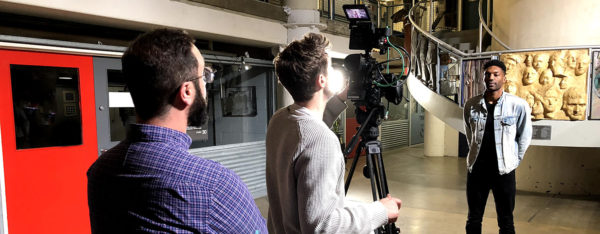
Social video gets 1200% more shares than text and images combined, according to smallbiztrends. It’s clear that if you want to build a community with your social media, sharable video is essential to your marketing plan. However, to stand out in the newsfeed, you need to know how to create engaging videos that are designed for the platform. Here are three video formats to include in your social campaign now, along with tips to make each one work well.
The Branded Documentary
A branded documentary is a powerful way to connect with your audience on social media. These videos explore the real stories that relate to your organization. It is important to remember, however, that a branded documentary is not a commercial. A story that resonates is a story that is emotional and authentic. If you shove your logo, product, or name in every shot – or force a tie to your brand – you won’t make an impact on your audience. Instead, choose emotional stories that are parallel to your brand and sponsor their telling.
For instance, pick a story that aligns with your brand values. Usually, these values are abstract, like kindness or teamwork, but they are still an integral part that defines your organization. Values are broad, and therefore you can have a wider pool of potential stories to choose from. Additionally, many customers may not specifically know what you care about as a brand and only know your products or service. If you create a branded documentary that defines these values, you can help your audience connect your brand to your values and raise your brand awareness. Meanwhile, a branded documentary fueled by an interesting story is super shareable on social media. This type of video brings in a wide audience that can increase your reach.
Tutorial Videos
If you’ve been on social media in the past five years, you’ve probably seen an explosion of How-To and Tutorial Videos sweeping the newsfeed. From Buzzfeed’s Tasty and Nifty to Ben And Jerry’s recipes, brands across sectors are jumping in on the trend. But, let’s address the white elephant here: content for these videos are very easy if you’re a food and beverage company, but if you’re a B2B marketer, you might have to get a little more creative.
At its core, a tutorial video is essentially a video that teaches your potential customers something that is of value to them. You are answering a question they might have, from “How do I use this product?” to “What should I make for dinner?” The ultimate goal is to create a video that is a reference that your viewers will save and use for later. This means that your video is not just a one-time interaction that’s easily forgettable, it has a long and recurring impact on the viewer.
This type of video reaches people who are in the questioning phase of the sales funnel, so to create effective video content in this vein you have to think critically about what someone would want from your brand at that point in the purchase journey.
Live Videos
Instagram, Facebook, and Snapchat all have innovated their platforms to host live videos. A live broadcast is a great way to put a face on your brand. The best live videos are candid, off the cuff events that bring your audience behind-the-scenes.
A live video is a perfect community builder. As your audience participates, you are addressing their questions or comments directly as they come up. Your potential clients can interact with one another in real-time. This is excellent, but that means you also have to put effort into logistically organizing your live-video session. The host will not be able to monitor the comments as easily as a moderator or facilitator, so make sure you include one someone on your staff that can play this key role.
A successful live video strategy is to think of your live videos as a television show. Creating a series that “airs” at the same time every day, week or month is a great way to garner regular brand followers. Offering discounts, sales or other incentives to either watch or share your live video helps your viewers feel like VIPs. Remember, don’t be scripted and stay authentic, but do come prepared with plans such as these to increase your engagement and viewership.
In the end, each type of video you create should target a specific segment of your audience. Whether you’re promoting a branded documentary to bring in a more broad appeal to your brand, teaching potential buyers about your products through tutorial videos, or creating a community of your strongest brand advocates with live video, keep in mind that your content should be informed by that specific audience. By putting your audience first, you’ll get more shares and more engagement.